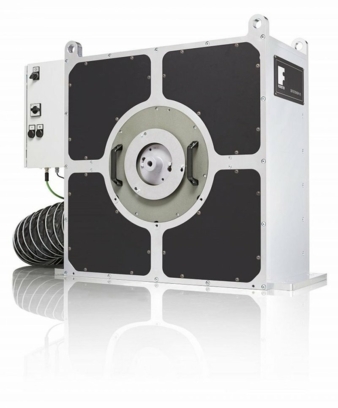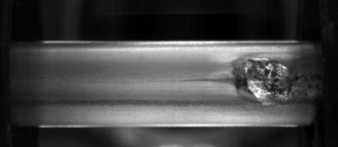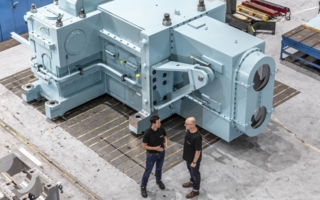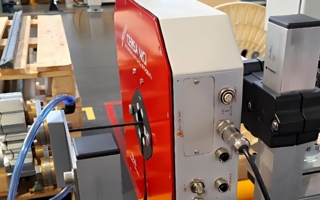06/06/2022 – High-speed photography
Documentation of quality in wire rolling mills
Electromagnetic testing methods have long been established as a method for quality monitoring in the wire industry. Quick, non-destructive, and reliable, the eddy current method can be used to assess the surface quality of material under test, as well as to monitor the quality of the test results. In many cases, conclusions can be drawn about the production process itself.
Eddy current testing is also very often used in wire rolling mills. Here, the wire moves at high speeds of up to 150m/s through the “Defectotherm” eddy current sensor from Foerster, when the wire is still glowing hot. The water-cooled sensor is designed for temperatures up to 1,200°C.
High-speed camera system
Since the hot-rolled wires are very long and finally wound onto a coil, usually the individual eddy current indications cannot be verified. To increase the significance and interpretation of the eddy current signals, Foerster has developed the optical documentation system “Defectoview HS” to supplement the eddy current testing.
Triggered by defect signals from the eddy current sensor, images of the defective wire surface are recorded and stored for the customer quality documentation. Even at the highest production speeds, the discovered material defects are still imaged in great detail.
Four high-speed cameras, along with specially adapted LED illumination, ensure that the entire wire surface can be covered.
Meaningful images provide more information
As soon as the wire rod has been rolled, the detected defects can be reviewed and evaluated visually. This allows the test supervisor to draw conclusions about potential production problems at a very early stage and to take targeted measures.
To do this, the obtained image data can be directly compared with the corresponding eddy current test data. This combination of data is presented via the “Defectoview HS” user interface.
With the help of Defectoview HS's informative defect images, a new eddy current testing instrument for a rolling mill can now be adjusted much faster than ever before. In this way, the selected test parameters can be visually verified, increasing their reliability.
Compact design and easy integration
Due to the camera system’s modest size – 49cm x 95cm x 87cm (L x W x H) – and its low precision demands in terms of wire guidance, the flexible “Defectoview HS” is especially easy to integrate into existing rolling mills. Since the images of the wire are taken continuously, “Defectoview HS” can be positioned anywhere behind the “Defectotherm“ coil.
Maintenance-friendly
Foerster knows the harsh conditions that exist in rolling mills. That’s why the “Defectoview HS” system is designed to be particularly maintenance-friendly. A special glass cylinder protects the cameras and LED lighting so well that even water cannot get in to do them harm. Scale and dirt that enter the system along with the wire are immediately removed by a fan. This reduces the cleaning effort to a minimum. Since all installed components are easily accessible, maintenance is quick and simple to carry out.
Conclusion
“Defectoview HS” helps wire rod mills to better evaluate the quality of their products, to detect problems within the production process at an early stage, and ultimately to reduce costs and to increase output.
wire 2022, hall 9 booth C 25/26
Institut Dr. Foerster GmbH+Co. KG
In Laisen 70, 72766 Reutlingen, Germany
Contact person is Lisa Viergutz
Tel.: +49 7121 140-518
lisa.viergutz@foerstergroup.com
www.foerstergroup.com





